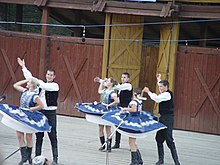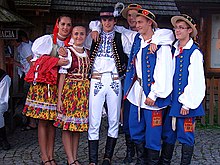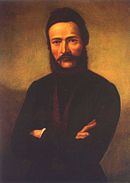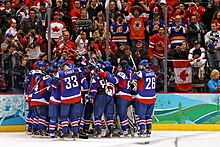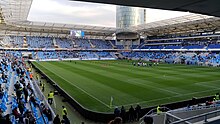
Slovakia, officially the Slovak Republic, is a landlocked country in Central Europe. It is bordered by Poland to the north, Ukraine to the east, Hungary to the south, Austria to the west, and the Czech Republic to the northwest. Slovakia's mostly mountainous territory spans about 49,000 square kilometres (19,000 sq mi), hosting a population exceeding 5.4 million. The capital and largest city is Bratislava, while the second largest city is Košice.

Žilina is a city in north-western Slovakia, around 200 kilometres (120 mi) from the capital Bratislava, close to both the Czech and Polish borders. It is the fourth largest city of Slovakia with a population of approximately 80,000, an important industrial center, the largest city on the Váh river, and the seat of a kraj and of an okres. It belongs to the Upper Váh region of tourism.

Juraj Jánošík was a Slovak highwayman. Jánošík has been the main character of many Slovak novels, poems, and films. According to the legend, he robbed nobles and gave the loot to the poor, a deed often attributed to the famous Robin Hood. The legend is known in neighboring Poland and the Czech Republic as well as Slovakia. The actual robber had little to do with the modern legend, whose content partly reflects the ubiquitous folk myths of a hero taking from the rich and giving to the poor. However, the legend was also shaped in important ways by the activists and writers in the 19th century when Jánošík became the key highwayman character in stories that spread in the north counties of the Kingdom of Hungary and among the local Gorals inhabitants of the Podhale region north of the Tatras. The image of Jánošík as a symbol of resistance to oppression was reinforced when poems about him became part of the Slovak and Czech middle and high school literature curriculum, and then again with the numerous films that propagated his modern legend in the 20th century. During the anti-Nazi Slovak National Uprising, one of the partisan groups bore his name.

Ružomberok is a town in northern Slovakia, in the historical Liptov region. It has a population of approximately 27,000.

Liptovský Mikuláš is a town in northern Slovakia, on the Váh River, about 285 kilometers (177 mi) from Bratislava. It lies in the Liptov region, in Liptov Basin near the Low Tatra and Tatra mountains. The town, known as Liptovský Svätý Mikuláš before communist times, is also renowned as a town of guilds and culture.
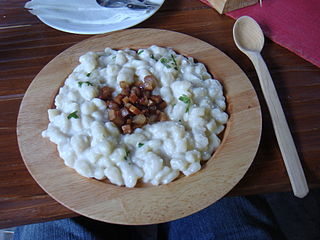
Slovak cuisine varies slightly from region to region across Slovakia. It was influenced by the traditional cuisine of its neighbours and it influenced them as well. The origins of traditional Slovak cuisine can be traced to times when the majority of the population lived self-sufficiently in villages, with very limited food imports and exports and with no modern means of food preservation or processing.

Vlkolínec is a village under the administration of the town of Ružomberok in Slovakia. Historically, however, it was a separate village. The first written mention of the village came from 1376 and after 1882 it became part of Ružomberok. Its name is probably derived from the Slovak word "vlk", i.e. wolf.

Hockey Club Košice is a Slovak professional ice hockey club based in Košice that competes in the Slovak Extraliga, the top tier of Slovak ice hockey. It is the most successful hockey club in Slovakia and the former Czechoslovakia, having won the Tipos Extraliga nine times, the Czechoslovak First Ice Hockey League twice, the 1st. Slovak National Hockey League once, the IIHF Continental Cup once, the Tatra Cup ten times, and the Rona Cup four times. The club is nicknamed "Oceliari", which means "Steelers" in English.
Ján Kozák is a Slovak football coach and former player. Recently, he was the manager of Slovak 1st tier team FC Košice.

Tourism in Slovakia offers natural landscapes, mountains, caves, medieval castles and towns, folk architecture, spas and ski resorts.

Hockey Club Slovan Bratislava is a professional ice hockey club based in Bratislava, Slovakia. In 2012, it left the Slovak Extraliga and joined the international Kontinental Hockey League (KHL). In 2019, it returned to the Tipos Extraliga. The club has won nine Slovak championships, one Czechoslovak championship (1979) and one IIHF Continental Cup (2004), making it the second most successful hockey club in Slovak history after their biggest rival HC Košice. The team plays its home games at Ondrej Nepela Arena, also known as Slovnaft Arena. The team is nicknamed Belasí, which means the "sky blues" in English.

The Ondrej Nepela Arena is an indoor arena in Bratislava, Slovakia. It is primarily used for ice hockey and it is the home arena of the HC Slovan Bratislava.

Bratislava is the capital city and the cultural and economic centre of Slovakia. It is home to several museums and galleries, including the Slovak National Museum and the Slovak National Gallery.

Liptov is a historical and geographical region in central Slovakia with around 140,000 inhabitants. The area is also known by the German name Liptau, the Hungarian Liptó, the Latin name Liptovium and the Polish Liptów.

Sport in Slovakia is influenced by its climate and geography; popular summer sports include football, tennis, volleyball, swimming, cycling and hiking, popular winter sports include skiing and snowboarding. The most watched sports in Slovakia are football, ice hockey and tennis. Internationally, the most successful sport in Slovakia is ice hockey where currently, as of 2022, the country is ranked as the eighth best team in the world by the IIHF World Ranking.

RONA a.s. is a Slovak drinking glass manufacturer, established in Lednické Rovne, Slovakia, in 1892. The name RONA comes from the former naming of the village ‘‘Lednicz Rone’’. The company manufactures unleaded drinking glasses, known as crystal glass. 96% of production is exported and is available in more than 80 countries worldwide. The yearly production of the company exceeds 60 million pieces (2016). Product segments include households, the gastronomy business, aerospace, and ship catering.

Košice Staré Mesto is a borough of Košice, Slovakia. It encompasses the historical centre of the city, consisting of the medieval and early modern core of Košice, with many preserved historical buildings of several architectural styles, and a small number of more modern architecture. The borough also includes the immediate environs of the historical centre.

Juraj Okoličány was a Slovak ice hockey referee and ice hockey administrator. He officiated from 1962 to 1986, including games in the Czechoslovak First Ice Hockey League, IIHF World Junior Championships, and Ice Hockey World Championships. He served as an executive with the Slovak Ice Hockey Federation from 1990 to 2003, where he developed officials, translated rules into Slovak, and directed the organizing committee when Slovakia hosted international events. He was also the manager of the Slovakia men's national ice hockey team from 1993 to 1998. He served as a committee member of the International Ice Hockey Federation (IIHF) from 1993 to 2008, and was a supervisor of officials at World Championships and Winter Olympic Games. His contributions to the IIHF and international ice hockey were recognized in 2008 when he received the Paul Loicq Award.
The architecture of Slovakia has a long, rich and diverse history. Besides Roman ruins, Slovakia hosts several Romanesque and Gothic castles and churches, most notably Spiš Castle, which were built at the time of the Kingdom of Hungary. Renaissance architecture was of particular relevance in town hall squares, such as in Bardejov and Levoča. Affluent architecture in the following centuries made use of Baroque, Rococo and historicist styles, while vernacular architecture in the countryside developed a specific style of wooden houses and wooden churches. In the 20th century, Slovakia knew Art Nouveau and modernist architecture, including socialist modernism, and finally contemporary architecture.

